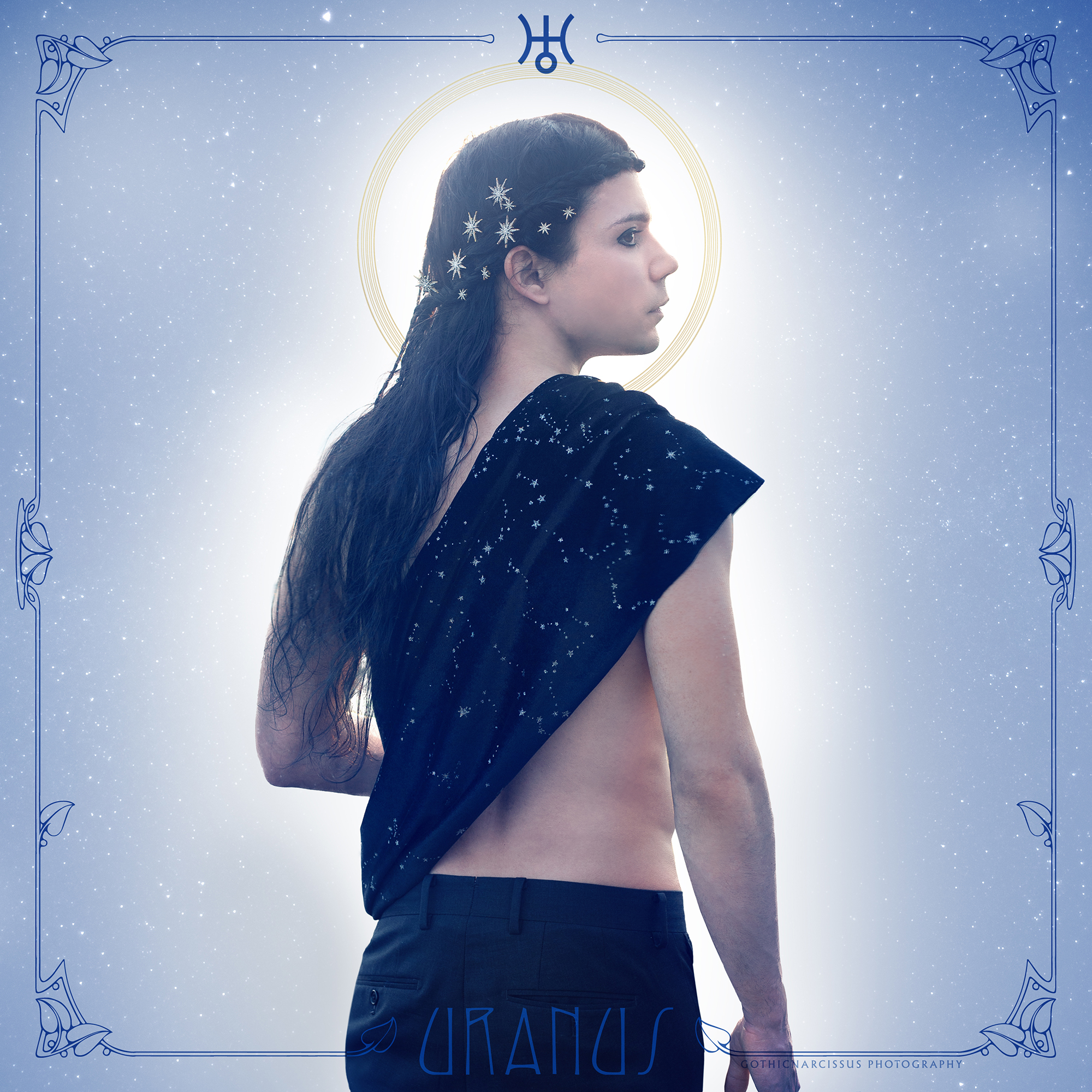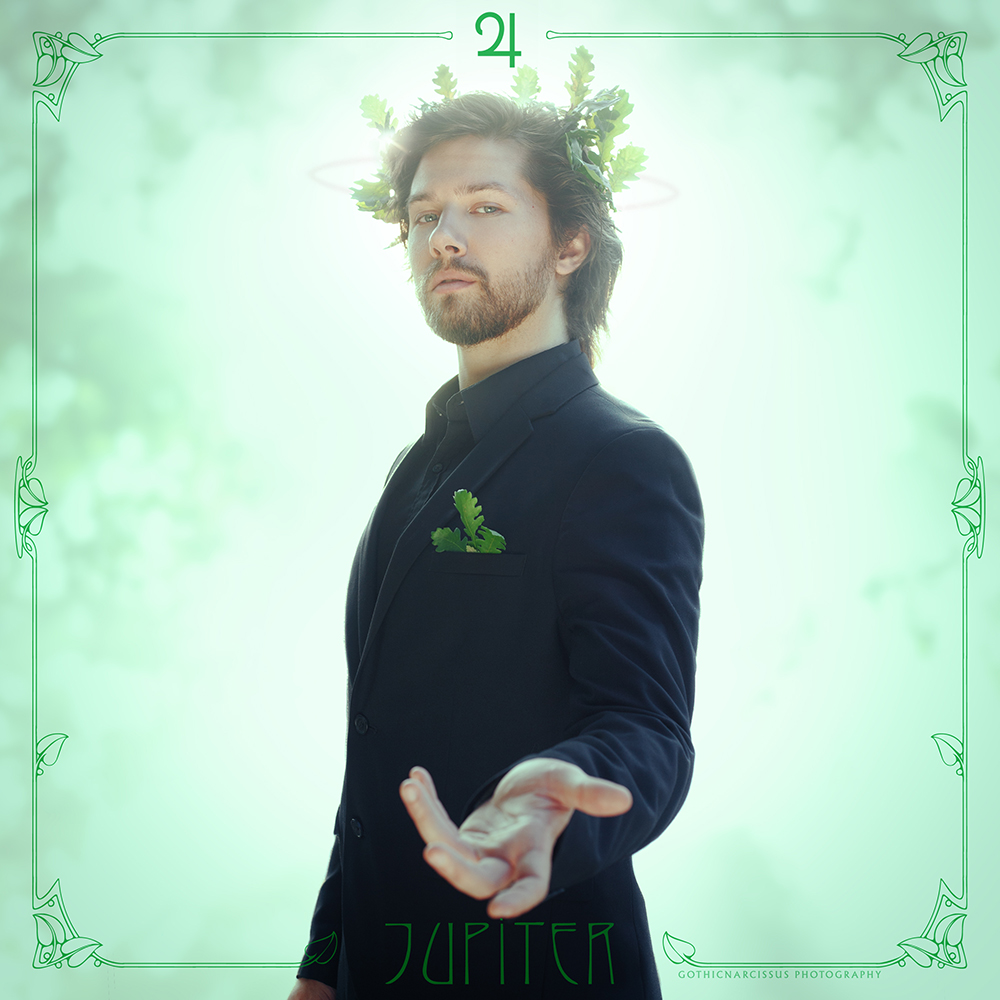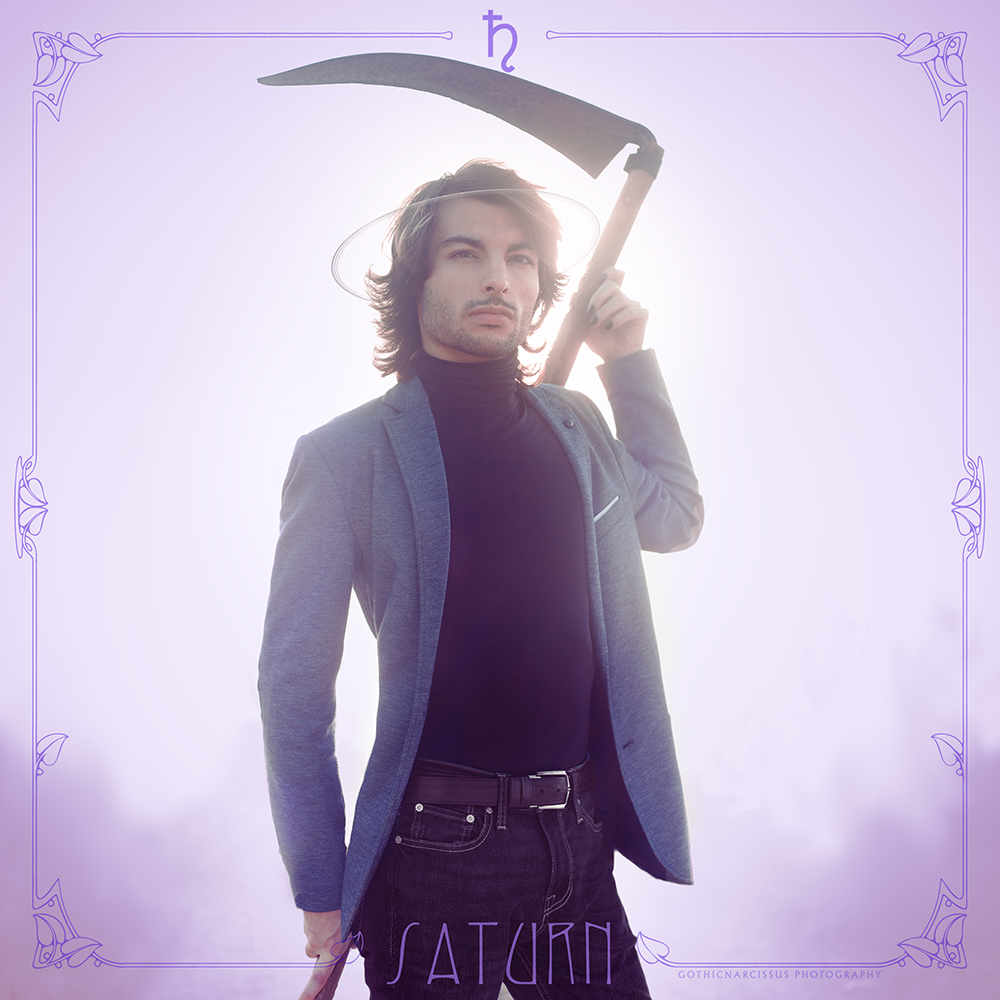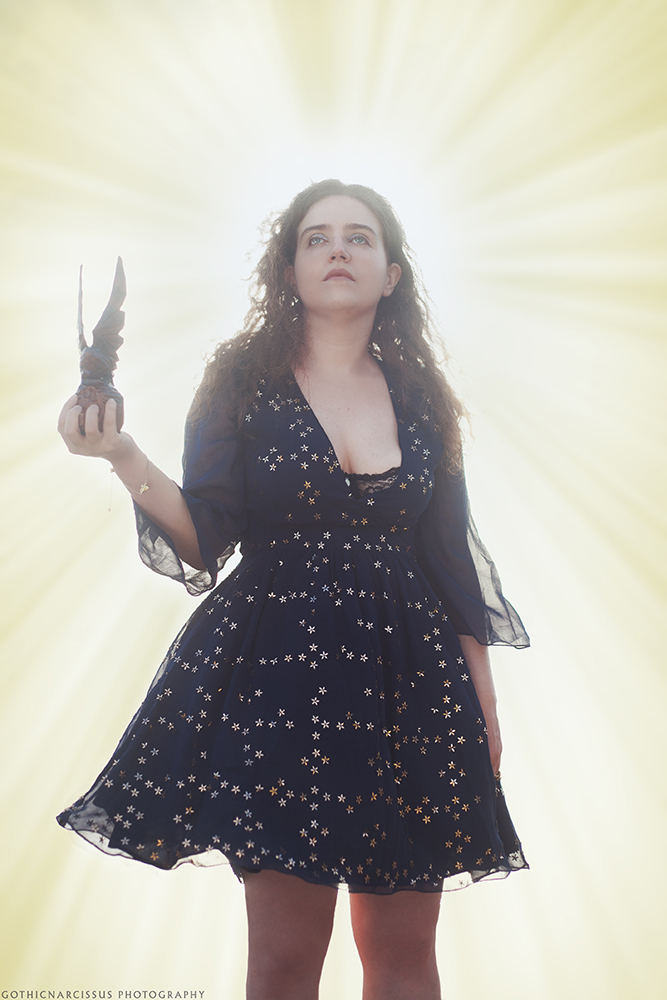The first Generational Planet, it represents freedom, evolution, technological advancement, an unconventional approach to life, self-expression against old traditions and limitations. On the downside, it embodies irresponsibility and petty, pointless rebelliousness.
Considered a “higher octave” of Mercury, Uranus develops its intellect into ingenuity and represents a person’s higher self.
Ruler of Aquarius, it has its exaltation in Scorpio, fall in Taurus, detriment in Leo.
Its glyph represents the planet surmounted by a stylised H for Herschel, and may be taken as meaning Matter over Spirit through the Soul’s receptivity.
Uranus is the first “modern” planet. While technically bright enough for a very, very good eye to see unaided on a very, very dark, moonless night, it’s still ridiculously faint and slow enough that its proper motion relative to the starry backdrop can go unnoticed. There’s a long history of possible sightings as early as classical antiquity, but it was consistently mistaken for a star until 1781, when British astronomer William Herschel… mistook it for a comet instead. A very weird one. But in his defence, until that night nobody since antiquity had ever discovered a new planet – only some of Jupiter’s and Saturn’s moons had been discovered by telescope till then – and the very concept was considered preposterous because of lingering Christian cosmology and stuff. But as the news spread across Europe, other astronomers observed it and confirmed that no, William, that’s not a comet, you’ve discovered a brand new, full-fledged planet. Imagine that!
It was groundbreaking: for the first time, the boundaries of the Solar System had grown! And fun fact, that would eventually snowball into the discovery of Neptune once discrepancies between the predicted and observed orbit of Uranus led to the conclusion that an outer planet was gravitationally perturbing it. Uranus literally revolutionised our understanding of the Solar System in as major a way as the adoption of the heliocentric model did.
There was much debate over what to name this new planet – some proposed Herschel after its discoverer, he himself suggested Georgian Planet for King George III, the one from the Bridgerton spin-off – until it was agreed to keep the Greco-Roman deity tradition and go with Uranus, the Greek god of the sky. From what I gather, Neptune was put forward, but ultimately Uranus won out because it was the father of Saturn, who was the father of Jupiter. It made sense and worked fine until the next planet showed up and ruined it.
Now, if you’re familiar with Greek mythology, you’ll know that Uranus is... kinda vague, like all Primordials. He was an instrument of Gaea’s creative force, then a limitation upon it, and then, after his castration, he all but vanished from the scene. Not much change, innovation or independence on his part – if anything, he was the recepient of his son’s revolution, the status quo that got swept away. All the Classical Planets derive their symbolism from their respective deities through century-old, established traditions, whereas Uranus seems to have little to do with its namesake – and even its name was arbitrary to begin with.
Well, it would appear that its symbolism is derived more from the context and circumstances of its discovery: the Enlightenment, an age of positivity, technological and social advancement, new discoveries and overcoming of the old systems. And also, by the revolution that its discovery represented: Uranus was deliberately juxtaposed to Saturn, who represents limits and was, at the time, scientifically the literal boundary of the Solar System, which Uranus all but smashed.
As I was developing the project, Jimmy Richter and I hadn’t collaborated in ages, but he was my first pick for the model nonetheless: for the inevitable puns, obviously, but also because he’s an unconventional, often iconoclastic creative force that would fit the theme to a T. I knew he would be down for it, and indeed it was one of the shoots we scheduled when I went to spend a week at his place in summer 2023.
My casting choice paid off big time: one of the best things about working with Jimmy is just how incredibly committed he always is. When I explained him the concept, he contributed actively to the development of the visuals and even volunteered to acquire a few proprs that ended up making all the difference.
I decided from the get go I would draw both from the properly astrological theme and mythological one when constructing the symbolism: the former I would convey through Uranus showing his back and looking rightward, both indicators of a focus on the future, as well as having him bare-chested, with just some loose fabric half-covering his torso, as opposed to Saturn’s more turtleneck or Jupiter’s suit, both conventional. Also, a scarf, stole or similar would be a call-back to Mercury (more on that later), creating a sort of “trilogy” with that and Pallas.
As for the sky god part, I opted for adding star-related elements to the image, but in my mind that would mean just the background. Purchasing the starry hairclips and stole to further reinforce the connection was Jimmy’s idea, and visually that’s become a pivotal part of the the image. Really, he made this photo just as much as I did!
With preproduction done, once we met up and got to shooting, the weather had us do some juggling and almost had us reschedule for one of the next days, but in the end the lighting conditions were great and the location Jimmy had suggested perfect, which allowed me to work with natural lights like the rest of the series, and that, once again, paid off amazingly with a warm, natural glow that shows even through the colour filter. The shoot itself was a relatively smooth although we tried several different variatons on the pose, but in the end we did everything quickly enough to get back home on perfect time for some delicious pizza afterwards!
Postproduction-wise, as soon as I decided my planets would all have halos, I thought Uranus’ should look as much as possible as its own rings, which appear “vertical” compared to the ecliptic due to the planet’s extreme axial tilt. This would in turn make the halo look like a powered up version of Mercury’s, which fits the idea of Uranus being its “higher octave” conterpart. This “octave” concept refers to the three Generational Planets being seen as “collective” versions of the three Personal ones: Mercury and Uranus are the mental duo, with Mercury representing individual intellect while Uranus is the collective one.
When choosing the main colour, I once again paid tribute to Sailor Moon, but Sailor Uranus is a bit tricky because her theme colour is navy blue in the manga, but wavers between that and golden yellow in the Nineties anime. I opted for navy because it would fit the starry sky theme better, but deliberately included a noticeable yellow accent with the halo – after all, yellow is the accent colour of Sailor Uranus too, and would definitely strengthen the visual connection.
Now, when publishing Pallas I had teased that this photo had already been taken and was only waiting to be edited. I did that around November 2023 (which means it took me forever by my standards), but I kinda sat on it until now partly because Jimmy and I had already scheduled up some other content to get the juices flowing, parly ‘cause I’ve been having a lot on my plate in other areas of my life for circumstances outside of my control, so my priorities and mental resources have been elsewhere.
Now, if you remember our astrology lesson with Saturn, he’s the one that dishes out limitations and especially tests that are outside of one’s control (if we want to make meaning out of casuality, it’s currently in Pisces, square to my own sign); maybe it’s the right time to bring up Uranus to kick Saturn in the butt, wipe away that heavy energy and refresh the scene a bit.
Let’s hope this release is topical and we get a little good revolution over here.








